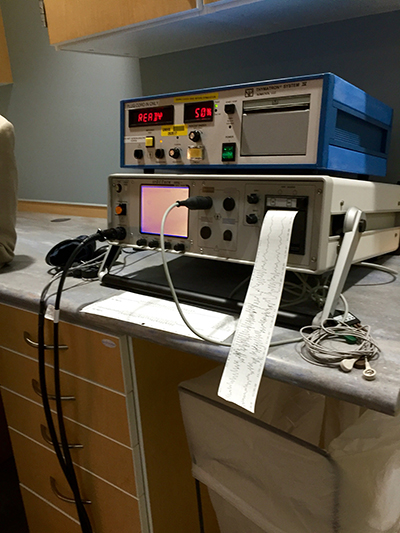
Mechanisms of ECT
Electroconvulsive therapy involves applying a brief electrical pulse to the scalp while the patient is under anesthesia. This pulse excites the brain cells causing them to fire in unison and produces a seizure.
The specific reason for the positive action of ECT is unknown, but this treatment appears to have many effects. There are multiple theories to explain why ECT is effective. One theory suggests that the seizure activity itself causes an alteration of the chemical messengers in the brain known as neurotransmitters. Another theory proposes that ECT treatments adjust the stress hormone regulation in the brain, which may affect energy, sleep, appetite, and mood.
Number of Treatments Needed
Treatments are normally administered three times a week on Monday, Wednesday, and Friday. A course of ECT normally ranges from six to twelve treatments. The average number of treatments is nine. The number of treatments that you need will be determined by the severity of your symptoms and how rapidly you respond.
It usually takes six treatments before major improvements in your symptoms are noted. However, family members, friends, and caregivers may begin to see mild improvements following the first 3 to 6 treatments. These improvements may include an increase in your activity level, improved sleeping patterns, and a mild increase in your appetite.
Your psychiatric care providers will monitor your response to the treatments. This information combined with your input will be used to determine how many treatments you will receive.
Right Unilateral VS. Bilateral Treatment

There are primarily two types of electrode placements used for the delivery of ECT. Differences between these two techniques include the area of the brain stimulated, timing of response and potential side effects.
Right Unilateral Placement
To generate a seizure with a right unilateral treatment, one electrode is placed on the crown of the head and the other on the right temple. Those receiving the right unilateral treatments may respond somewhat more slowly than those who receive bilateral treatments. This difference is usually no greater than 1 to 2 treatments. Right unilateral treatment is typically associated with less memory side effects. Patients who do not respond to right unilateral treatments may require a switch to bilateral placement.
Bilateral Placement
Bilateral ECT treatment involves placing the electrodes on both temples. This treatment may be associated with more acute memory side effects than right unilateral treatments. Bilateral ECT is indicated for severe mental illnesses including depression with psychosis, manic episodes of bipolar disorder, psychosis related to schizophrenia and catatonia.
You and your doctor will work together to determine which treatment option is best for you. Specific recommendations will be made after carefully evaluating your concerns, medical/psychiatric history, and the severity of your symptoms.



